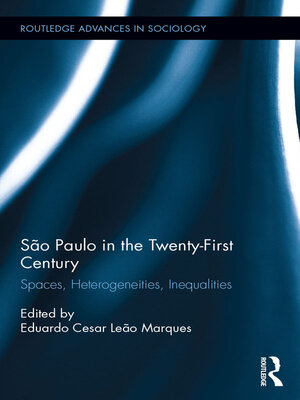São Paulo in the Twenty-First Century
ebook ∣ Spaces, Heterogeneities, Inequalities · Routledge Advances in Sociology
By Eduardo Cesar Leão Marques

Sign up to save your library
With an OverDrive account, you can save your favorite libraries for at-a-glance information about availability. Find out more about OverDrive accounts.
Find this title in Libby, the library reading app by OverDrive.



Search for a digital library with this title
Title found at these libraries:
| Library Name | Distance |
|---|---|
| Loading... |
This book analyzes in detail the main social, economic and special transformation of the city of São Paulo. In the last 30 years, São Paulo has become a more heterogeneous and less unequal city. Contrary to some expectations, the recent economic transformations did not produce social polarization, and the localized processes of spaces production (and the plural is increasingly important) are more and more key to define their respective growth patterns, social conditions, forms of housing production, service availability and urban precariousness. In other dimensions, however, inequalities remain present and strong and certain disadvantaged areas have changed little and are still marked by strong social inequalities. The metropolis remains heavily segregated in terms of race and class, in a clear hierarchical structure.
The book shows that it is necessary to escape from dual and polarity interpretations. This did not lead to the complete disappearance of a crudely radial and concentric structure (not only due to geographic path dependence), but superposes other elements over it, leading to more complexes and continuous patterns. A general summary of these elements could perhaps be stated as pointing to greater social/spatial heterogeneity, accompanied by smaller, but reconfigured inequalities.







